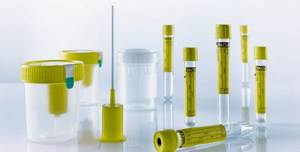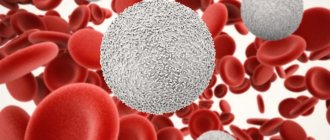In healthy people, urine
, as a biological fluid, is sterile. But under the influence of various factors, it can easily become contaminated with pathogenic microflora. As a rule, such reasons are taking antibiotics, infection with microbes of the vagina, urethra and perineum, inflammatory processes in the urinary tract and various dysfunctions in the endocrine system.
Indications for examination
Microbiological examination of urine allows one to determine with high reliability the qualitative and quantitative composition of the flora. Therefore, this analysis is widely used in medical practice and is mandatory prescribed:
- pregnant women;
- patients with genitourinary system infections;
- patients with AIDS, diabetes mellitus and people with various disorders in hormonal metabolism.
Specific symptoms for urine culture for microflora include pain in the lower abdomen, painful or frequent urination. In children, urinary infections can manifest as irritability, an unreasonable decrease in appetite, and even an increase in body temperature.
The study is often prescribed as a control test to confirm the diagnosis in case of atypical symptoms and to monitor the effectiveness of prescribed therapy, as well as to determine the resistance of the flora to the main and extended range of antibiotics. The analysis is part of the general program for preparing patients before various surgical interventions (kidney transplant, resection of the prostate gland, etc.) and is prescribed to children to confirm the diagnosis of vesicoureteral reflux.
May additional research be needed?
Bacterial culture is considered one of the most difficult studies. Often its results turn out to be unreliable, for example, due to non-compliance with the rules for taking the analysis. That is why it can be appointed more than once. If the indicators remain the same, the specialist should conduct a more detailed diagnosis of the patient’s condition.
It includes laboratory and instrumental methods:
- general and biochemical blood test (leukocytes, erythrocytes, creatinine);
- smear from the genital tract or urethra (assessment of microflora and cells);
- ultrasound and x-ray examination of the kidneys;
- CT and MRI of the genitourinary system;
- if necessary, a kidney biopsy.
Additional consultation with specialized specialists - nephrologist, infectious disease specialist, gynecologist, surgeon may also be necessary.
A culture test for sterility will be prescribed by a doctor if the development of inflammatory diseases in the genitourinary organs is suspected. Despite the long lead time and the need to strictly adhere to the rules for taking the analysis, this type of diagnosis is still one of the most informative. It is thanks to bacterial culture of urine that pathology can be detected in time and its timely treatment can begin.
Detected pathologies
In relation to urogenitalia, only streptococci of the viridans group, Corynebacterium spp., Lactobacillus spp., Neisseria spp., Staphylococcus spp. are considered friendly. Therefore, their presence in the titer is considered normal, in contrast to the presence of bacteria such as:
- Candida spp;
- Escherichia coli;
- Klebsiella spp.;
- Proteus spp.;
- Staphylococcus saprophyticus and Pseudomonas spp;
- Enterobacteriaceae (Klebsiella, Salmonella, Citrobacter).
This is just a short list of likely pathogens. In fact, microflora culture provides more extensive information, which makes it possible to accurately determine the infection, and therefore select the most effective treatment for numerous diseases of the urinary system. These include:
- cystitis. Infectious inflammation of the bladder, accompanied by discomfort and frequent urination;
- pyelonephritis. An inflammatory process that affects the kidneys and has a bacterial etiology. If treated incorrectly, it can develop into acute renal failure or urosepsis;
- urethitis. Common diseases caused by microorganisms and occurring in acute and chronic forms. Often accompanied by purulent discharge and negatively affect pregnancy.

Bacterial infections contribute to the development of prostatitis. They also cause acute urethral syndrome and other urological diseases.
How pathogens enter the urinary system
Urine is produced in the kidneys, a pair of organs located at the bottom of the rib cage, to the right and left of the spine, closer to the back. The kidneys filter waste and substances that the body does not need from the blood, producing urine from them, which flows from the kidneys into the bladder through the ureter tubes . There, urine is temporarily stored and leaves the body after emptying the bladder through the urethra.
In most cases, urine is a sterile substance, meaning bacteria and fungi do not live in it. But sometimes microorganisms penetrate the urethra from the skin surrounding the external opening and rise up the urinary tract, causing infection.

It is worth noting that women and girls get UTIs much more often than men and boys due to the structure of the urinary system. A variety of bacteria and fungi can cause UTIs. The most common:
- Eschirichia coli bacteria, which normally live in the gastrointestinal tract and are usually detected in stool tests.
- Proteus.
- Klebsiella.
- Enterococcus.
- Staphylococcus.
- Candida Albicans is a fungus that causes thrush.
Most cases of infection are not serious diseases, occur without complications, and are easy to treat. But if the disease is left to chance, the infection can go further up and enter the kidneys through the ureters. Kidney infection (pyelonephritis) is a much more serious condition that can lead to irreversible kidney damage.
Very rarely, in the most severe cases, urinary tract infections can lead to blood poisoning (sepsis), which is a life-threatening condition.
Patients with any type of kidney disease, diabetics, and people with weakened immune systems are much more likely to experience frequent, recurring, chronic, complicated urinary tract infections. Therefore, they need to visit the doctor frequently for check-ups.
Preparing for the test correctly
When collecting biological material, it is extremely important to ensure its bacteriological purity. Therefore, urine is collected in a disposable sterile container with an adapter, which should be purchased from a pharmacy or laboratory in advance, and the patient must carefully perform personal hygiene procedures in the genital area. Transferring into another container is not permitted. Women and girls who have menstrual or other vaginal discharge at the time of the test must use a tampon. On the eve of the test, it is recommended not to drink alcoholic beverages or yeast breads. You should also stop taking medications.

Preparation
Since the purpose of the analysis is to determine the content of microorganisms in urine, and not on the surface of organs, it is important to prevent the container for collecting urine from coming into contact with the genitals, hands, etc.
Before the procedure, you need to thoroughly wash and dry your hands and perform intimate hygiene procedures without antiseptics.
The day before the analysis, it is not advisable to perform any physical activity or eat food that has dyes. If the rules for preparing and collecting urine were violated, the results will be false and the treatment will be incorrect.
How is urine collected for analysis?
The biomaterial is collected immediately after sleep. It is important to note that at least 4 hours must pass from the last meal and urination.
Only average morning urine is used for analysis, that is, the first portion of biological fluid that comes out in the first two seconds is not collected. Subsequent urine in an amount of about 50 ml is collected for testing.
In children, the procedure is carried out with the help of parents. In some cases, it is possible to collect urine at other times of the day, as well as using a catheter or performing a puncture from the bladder.
The collected material is provided to the laboratory within 1 ÷ 2 hours. If this is not possible, the container can be left for short-term storage in the refrigerator, but no more than 6 hours later it should be delivered for examination.
Determination of antibacterial sensitivity
Determination of the sensitivity of uropathogens to antibiotics is carried out using one of three methods recommended by the European Committee on Antibiotic Resistance:
- 1Disk method - a suspension of bacteria of a predetermined density is applied to the surface of the agar in a Petri dish, then disks containing a certain concentration of antibiotic are placed on top, which leads to the appearance of a zone of inhibition of bacterial growth, the diameter of which is used to judge the sensitivity of the microorganism and determine the minimum inhibitory concentration of the drug;
- 2Gradient-diffusion E-test - the method is similar to the disk test, but instead of antibacterial disks, E-test strips containing a concentration gradient of the antibiotic from minimum to maximum are used. In this case, the minimum inhibitory concentration of the drug is also determined;
- 3 Using the serial dilution method - the antibiotic is diluted in several, previously known concentrations, and then introduced into agar for cultivating bacteria. The degree of suppression of bacterial growth can also be used to judge the presence or absence of sensitivity to the antibiotic.
Decoding the results: norm and deviation
An analytical assessment of bacterial culture is given after 48 hours of incubation. It is important that the laboratory test data be interpreted by the attending physician.
Interpretation of results
- The microbial concentration threshold of less than 1000 CFU/ml is “negative” (no microbial growth is observed);
- The number of bacteria more than 100,000 CFU/ml is “positive” (microbiological forms are present in the urine and can be pathogens).
- The concentration of microorganisms ranges from 103 to 105, indicating various clinical symptoms and is interpreted depending on the patient’s condition and general history.
Some people have multiple types of bacteria. If their number is more than 3, and the concentration in the crop is the same, then this indicates a mixed flora and no further identification is carried out.
In what cases is a false answer possible?
It is not recommended to take the test earlier than 2 weeks after completing the course of hormonal and antibacterial therapy. In such cases, there is a high probability of a false research result.
Also, an incorrect result can be obtained if the purity of the biological material is compromised. Or if it was provided to the laboratory later than 6 hours after collection and was stored at a temperature above +15 ˚С.
What is bacterial seeding?
Bacteriological examination, urine culture, sterility analysis, bacteriuria analysis - all these are different names for the same research method. Its essence lies in the fact that the collected material (urine) is sown on a medium nutritious for bacteria and placed in a thermostat. The parameters necessary for bacterial growth (temperature, humidity) are maintained there. After some time, colonies of microorganisms appear, their number is counted to determine the overall indicator of microbial contamination of the material. This is the level of bacteriuria or the microbial number of urine - the number of colony-forming units (CFU) in 1 ml of urine. A CFU is one microorganism that has given rise to one colony.
To identify the pathogen, all colonies are subject to biochemical typing. This stage allows you to determine whether the microbe belongs to a specific species. If necessary, the sensitivity of bacteria to antibiotics is determined. For this purpose, special discs impregnated with various antibiotics are used. If there is no colony growth around the disc, this indicates that the antibiotic is effective against the microbe. Sensitivity is measured in millimeters of the diameter of a circle in which there is no growth zone.
The entire diagnostic process takes from 7 to 10 days.









